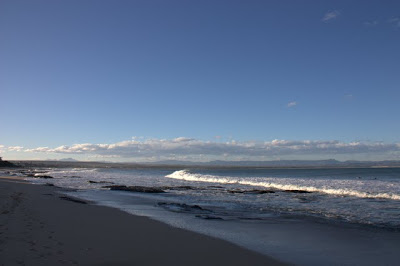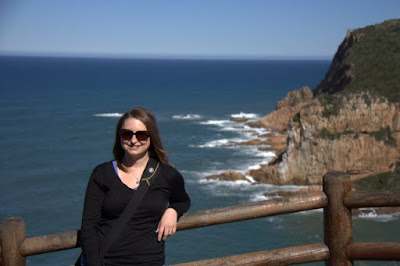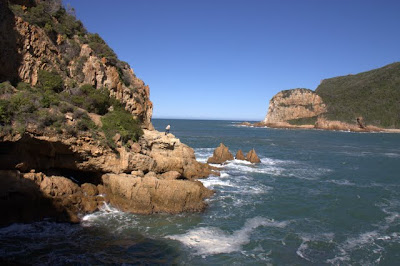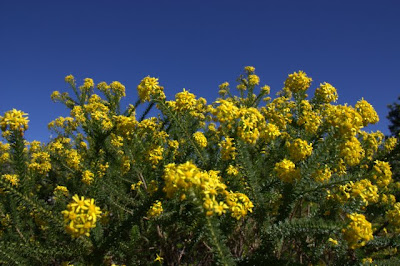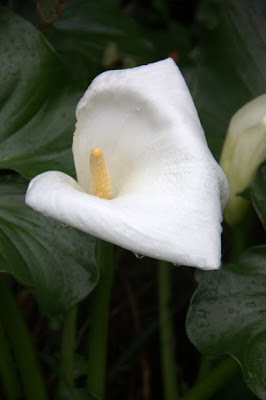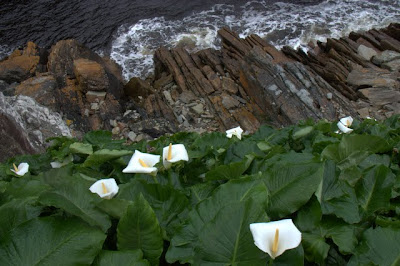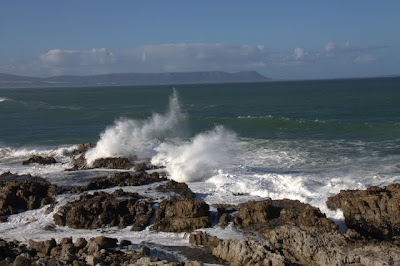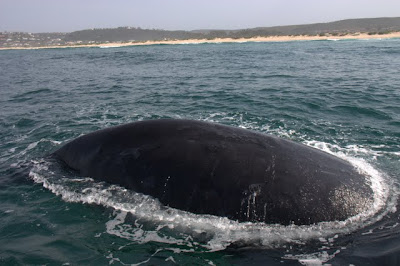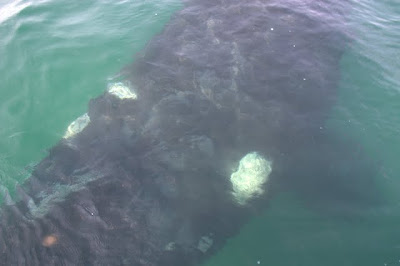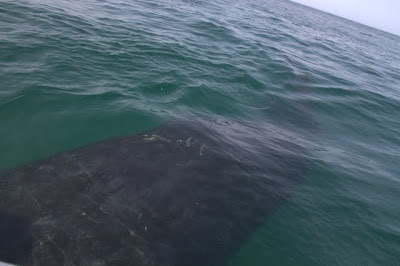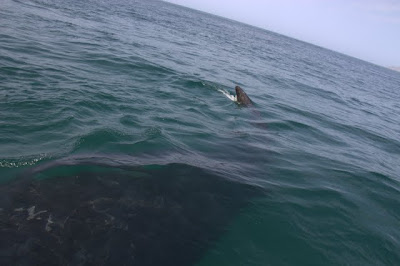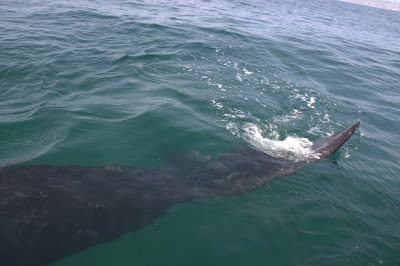Supertubes, Dude
In the 1960s, surfers discovered the perfect wave in Jeffreys Bay, South Africa, turning the sleepy beach town into a surfers’ haven.
Jeffreys Bay is now regarded as one of the top five surfing destinations in the world. Each year, Jeffreys Bay is host to the annual Billabong Pro ASP World Tour surfing event. The waves in Jeffreys Bay have one of the most consistent and quality right hand point breaks in the entire world. The Supertubes, which break for about 300 meters or more, are regarded as the best of the best.
It had been raining all day when we arrived in Jeffreys Bay. Suddenly, the rain stopped, and a rainbow appeared over Supertubes Beach.
Shortly thereafter, we watched all of the surfers staying in our guesthouse frantically grab their wetsuits and boards, rushing to the beach to catch some waves before the sun went down.
Despite Sean’s ability to actually get up on a surfboard (demonstrated on our honeymoon in Hawaii five years ago), we just watched the surfers work the Supertubes in the late afternoon sun. Even I could tell the waves were perfect for surfing. Long and tubelike – hence the name – the Supertubes allow the surfers to ride the wave horizontally to the beach for a good distance.
As much as we liked Jeffreys Bay, we had no plans to return anytime soon. The night after we stayed in Jeffreys Bay, we stopped in East London for the night before our planned drive up the Wild Coast the next day. It wasn’t until we reached East London that I realized that I forgot my trail running shoes at our guesthouse in Jeffreys Bay. Oops. Kind of an important item when you are travelling for a year. We were already on a tighter schedule than we would have liked due to our lack of planning, but we agreed we had no choice. We would have to cut our Wild Coast plans short by one day, make the 3 1/2 hour drive the next day to Jeffreys Bay to retrieve my shoes, and then drive 3 1/2 hours back to East London for the night. Not the best day of our trip, but at least there was a silver lining. Returning to Jeffreys Bay meant we got to eat lunch again at Wax Cafe. Wax Cafe is a fun little place with good food and that chill surfer vibe. It shows videos of surfers on the Supertubes and lists the daily surf report on the chalkboard out front.
This would be our third meal there in two days – it was that good. Our favorite waitress, the same one who had waited on us for our previous lunch and breakfast, was very confused to see us again. If you ever find yourself in Jeffreys Bay, check it out.
Scenes from South Africa’s Garden Route
A Tale About Whales
When we realized that we were in South Africa during whale season, we tried to view whales the good budget backpacker way, we really did. In between visits to Wine Country and the Garden Route, we dropped down to the coast to visit Hermanus, a town known for its great land-based whale watching. The way the tourism brochures describe it, all you need to do is walk along the oceanfront route and whales will swim right up. This may be true, but not for us. It didn’t help matters that when we arrived in Hermanus, the weather was the coldest and rainiest during our entire month in South Africa.
The pounding rain made whale watching on our first day impossible, so we tried again the next morning. Slightly cranky from spending the night in a backpackers cottage that had no heat and was overrun by very loud nocturnal campers stowing away inside, we stood in the freezing cold, straining our eyes to try to spot something, anything. The winds whipped the ocean into a such a frenzy that whale watching turned out to be next to impossible. We did see a couple of whales way off in the distance, but it really isn’t that exciting standing in howling winds looking at a speck in the water. See right there? Is that a fin? One of us would say. No, maybe a tail? Who knows.
When we ended up in Plettenberg Bay a couple of days later, we decided to shell out the money for a premium whale watching tour with Ocean Safaris. The premium tour means that the boat can get within 150 feet of the whales, but if the whales want to get closer, that’s their prerogative.
Within 10 minutes of setting out to sea, we spotted our first whale. Shortly thereafter, a group of frisky, playful whales decided our boat looked pretty interesting, and started swimming towards us.
Not only did the whales get close, but they swam around our boat. Along our boat. Under our boat. Lengthwise. Widthwise. At times, an entire whale was underneath our boat. I pondered whether this was a problem, but then decided that the ocean is rather deep after all. There must be room for all of us.
Being so close to such an enormous mammal is a very cool experience. To get a sense of just how large a whale actually is, watch this whale swim underneath our boat:
